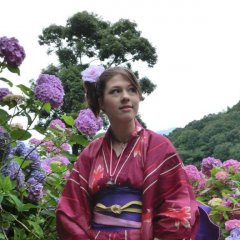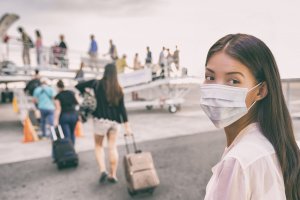Face masks are a big thing in Japan, especially during flu or allergy season. But are they effective at preventing illness or symptoms? Here are some answers to your questions about surgical masks in Japan and even other ways to protect yourself from getting sick while traveling the country.
When is the flu season?
The influenza season generally lasts from December to April every year. It tends to peak in late January and early March. Many Japanese residents receive their vaccination mid-December. But there can be many strains of flu throughout the season so it’s important to remain vigilant.
Since Dec 2019, there is growing concern over the spread of a novel coronavirus strain, "2019-nCoV" originating in Wuhan, China. To understand the latest travel situation, please consult our coronavirus updates.
A fever typically accompanies the flu while a cold goes without. The CDC recommends getting a current flu vaccination two weeks before traveling abroad as it ought to cover the most common influenza viruses active at the time. The age-old adage “better safe than sorry” definitely springs to mind.

As for allergies (also a mask-wearing season), depending on the pollen you’re allergic to, the season can last from February to October! Some common allergy-causing plants are Japanese cedar from February to April; Japanese cypress from mid-March to early May; and even the rice plant from May to mid-July and mid-August to mid-October.
Japan, of course, offers OTC drugs to alleviate the suffering of symptoms and traveling with medicine is never easy, so it may be easier to visit a Japanese pharmacy.
Why wear a mask?
It’s not uncommon to see people wearing a face mask practically anywhere in their daily lives. Some masks for schoolchildren even have colorful designs, patterns, or look like the faces of popular characters. In many cases, the person wearing the sick mask is not suffering from a highly contagious disease—more than likely, they are trying to stay healthy, find relief from allergies, or—in some cases—they didn’t have time to shave or put on makeup!
Whatever the reason, it’s easy to see mask culture all around you in Japan. In the past, it was even a fashion fad for delinquents. Nowadays, surgical masks are used for many reasons. One lesser-known reason is to keep your face warm during winter—and it works! Your breath naturally heats the mask and keeps your cheeks and face warm during the dry cold. On the other hand, if you have a fever, it can feel humid and uncomfortably warm but it’s important to persevere to stop the spread of those infectious germs.
More than fashion or cheek warmers, masks are here to keep everyone healthy. When people get sick, the hope is that they stay home and don’t spread their illness to the rest of us—but that’s not always the case, and you can’t always know who’s sick on the train—so it’s a common opinion that masks are the best defense. And wearing a face mask is a great idea in high-risk areas, like hospitals and clinics where infected people have gathered.

Are masks effective?
Perhaps the biggest question regarding flu and allergy masks is are they even effective? Before you head down to the nearest conbini or pharmacy to buy them out of stock, let’s take a look at the facts.
When it comes down to it, the answer is maybe. The CDC states that face masks can cut down on the spread of airborne viruses that are transmitted via breathing, speaking, coughing, or sneezing. If someone is sick and decides to venture out, it’s a courtesy to those around that they wear a mask. Masks can cut down on large virus particles according to many doctors—but it’s far from 100%. A study by the New York Times suggested that wearing a flu mask at the height of the season can cut down on the spread of viruses as much as 2.8 times. Still, that’s nothing to sneeze at.
If you decide to don the mask, you can buy them at many stores. Whether it be a 7-Eleven conbini, Don Quixote, or a pharmacy, you can find them in a variety of styles, colors, and even some with minty inserts to help you decongest. Remember that the majority of masks are meant to be a one-time use. Unwrap your new mask, wear it for the day, and then throw it away.
Safeguarding
There are plenty of other ways to safeguard from sickness. Doctors still say hand-washing is one of the best ways to stay healthy. Always use soap and warm water and wash your hands thoroughly after returning home from outside. Hand sanitizer (shoudoku eki) can also help in a pinch.
One common Japanese practice is gargling with water, saltwater, iodine gargling solution, or even green tea! It might not be the most pleasant experience if you aren’t used to it, but even a travel bottle of mouthwash can help cut back on those wicked germs. And back to green tea, it’s suggested by many Japanese—though not proven—that simply drinking green tea throughout the day acts as an antiseptic for your system.

It’s important also to practice good cough etiquette: cover your mouth and nose with a tissue or sneeze into your upper arm and do not turn your face toward others. Discard tissues as soon as you’re finished with them and wash your hands immediately.
As for blowing your nose in public if you’re sniffly, you’ll definitely garner more than a couple looks. It’s uncommon to hear people blow their nose in public, instead usually visiting a restroom if necessary.
Good luck and stay healthy!






























